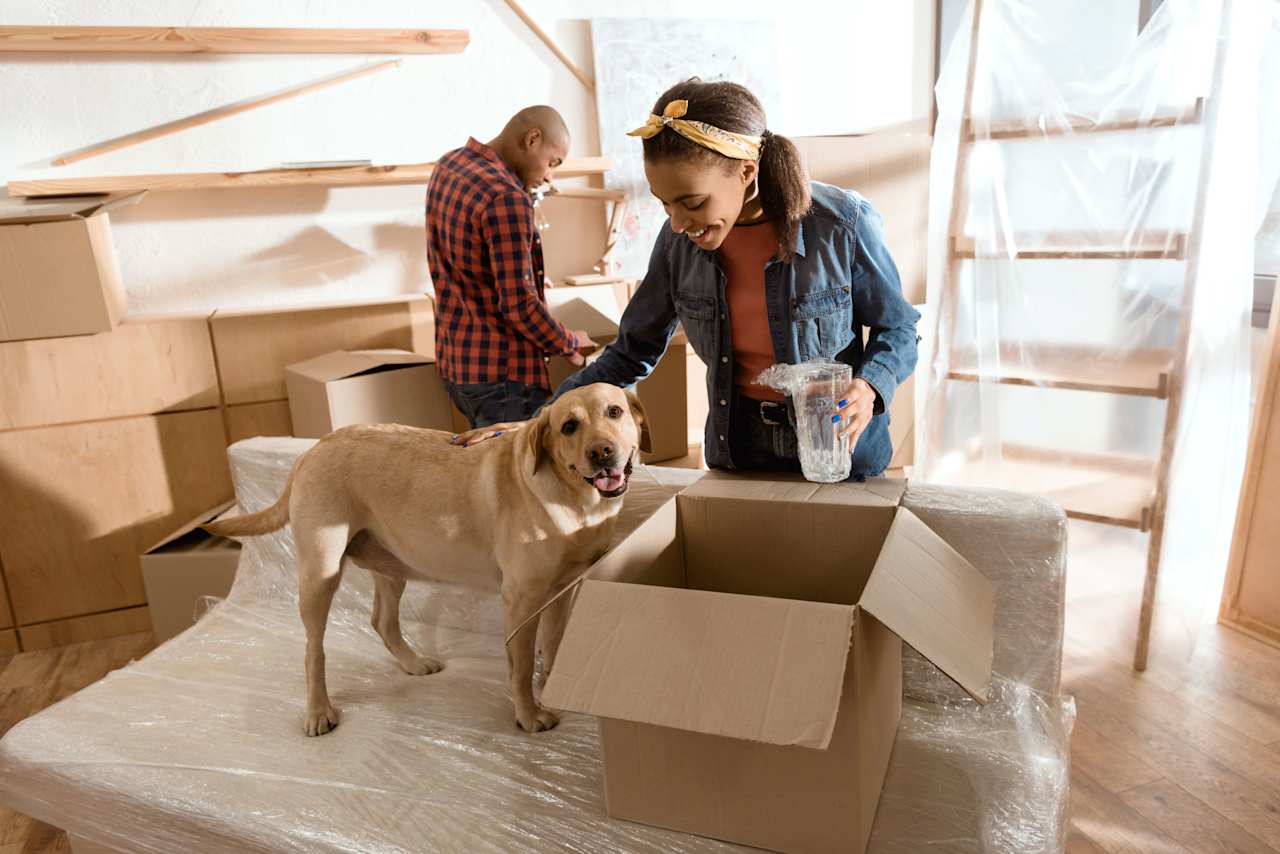Moving to a new home may be one of the most stressful life events you’ll ever have to tackle. But in the chaos of cardboard boxes, packing tape and moving trucks, you might not realize how stressed your pets feel, too. Read on for ways to make the transition as safe and easy as possible for your furry friends.
Choosing a New Neighborhood, House or Apartment
Before you pick out your dream home, make sure your pet will love it just as much as you do. It’s a good idea to walk around the neighborhood to determine whether the area seems safe for your pets. Be on the lookout for neighborhood dogs that seem aggressive or are left unattended.
When it comes to square footage needs, cats and dogs differ:
- For your feline friends, ensure your potential new space allows for plenty of room to build vertically—it’s easy to create a lot of vertical space with shelving, such as kitty blocks on top of furniture.
- Consider your dog’s needs on a case-by-case basis. Older dogs, puppies and dogs with house training issues will need to go outside often, which might be difficult in an apartment building with lots of stairs or a house without a yard.
Update your pet’s tag with your new address.
Make sure your pet’s collar is sturdy and correctly sized. The tag should also include your mobile number and email address so that you can be reached during the move.
Request veterinary records.
Ask your current vet to send your pet’s medical history directly to the new vet. Have their contact information handy in case of emergency or if the new vet has questions.
Keep a week’s worth of food and medication with you.
You may want to ask for an extra prescription refill before you move. Take the same precaution with special therapeutic foods.
Seclude them from chaos.
Keep your pet in a safe, quiet room on moving day with a clear sign posted on the door. There are many light, collapsible travel crates available, but ensure it is well ventilated and sturdy enough for stress-chewers. Also, introduce your pet to the crate before the trip.
Prepare a pet first aid kit.
Include your vet’s phone number, gauze to wrap wounds or to muzzle your pet, adhesive tape for use on bandages, nonstick bandages, towels, cotton swabs, antibiotic ointment (without pain relief medication), and 3% hydrogen peroxide.
Play it safe in the car.
Use a crate or carrier in the car, securing it with a seat belt. Never leave your pet in the bed of a truck, the storage area of a moving van, or alone in a parked vehicle. If you’re staying overnight, find pet-friendly lodging beforehand and have kitty litter or plastic bags on hand.
Get ready for takeoff.
When traveling by air, check with the airline about pet requirement or restriction and whether you must purchase a special airline crate that fits under the seat in front of you.
Prep your new home.
Set up one room with everything your pet will need: food, water, medications, bed, litter box, scratching post, and toys. Keep windows and doors closed when your pet is unsupervised and beware of small spaces where nervous pets may hide. If your old home is nearby, give the new homeowners or neighbors your phone number and a photo of your pet, in case your pets tries to return.
Learn about local health concerns and laws in your new area.
If you’re moving to a new country, contact the Agriculture Department or embassy of the county to obtain specific information on special documents, quarantine, or costs related to bringing your pet into the country.
